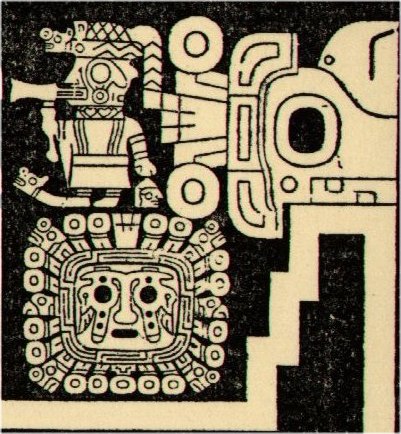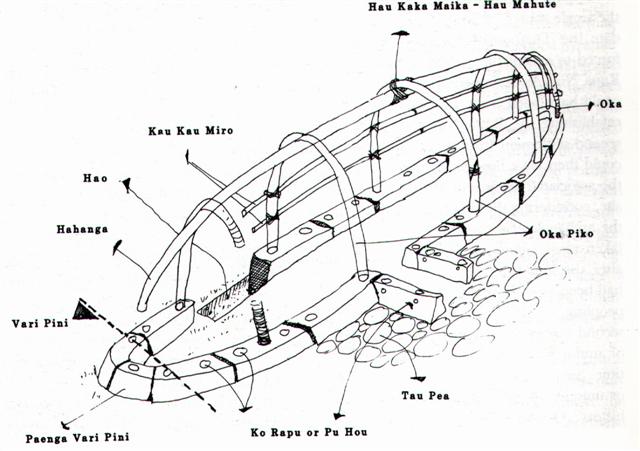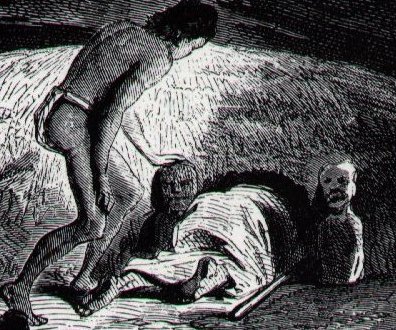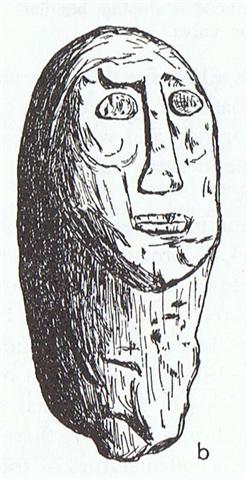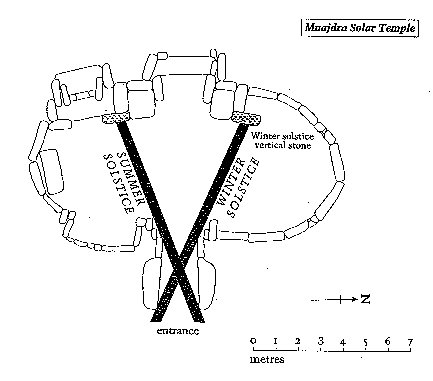|
TRANSLATIONS
The word patu suggests the situation at the end of the year, when the old fire cannot be allowed to continue. The midwinter sea is the opposite of midsummer fire. The 1st half of the year is dominated by the 'fire' which raises the sky and also lifts the land up, the power of growth. Then waning comes, just in time to stop everything drying up completely, with fire threatening to destroy the world. The two extremes - everybody drowning (midwinter) or everybody burning to death (midsummer) - must be stopped before it is too late. The 'head' of water respectively the 'head' of fire must be cut off:
The trumpet must sound to disturb the threatening god, he must be stopped in his course, decapitated on the spot:
The glyph dictionary:
There are 2 beams (not 3 which I for a moment suspected) upholding the sky roof. A hare paega could maybe be the model:
Yet, there are difficulties: Where are the 2 great beams? The turning points for the sun ought to be the short ends of the hare paega. What does vari pini mean? I cannot find any explanation of pini, but vari seems to be appropriate for a sharp bend:
We cannot find any great straight beams in the hare paega construction, but they ought to be in the middle of the long sides. I therefore guess the two figures at the entrance must represent the great (sun) beams: ... The low entrances of houses were guarded by images of wood or of bark cloth, representing lizards or rarely crayfish. The bark cloth images were made over frames of reed, and were called manu-uru, a name given also to kites, masks, and masked people ...
In a building constructed by timbers, e.g. the Maori community houses, there is better room for great straight beams:
The picture is from Starzecka. I guess the two poupou (8) must correspond to the uru manu of Easter Island. They are at left and right in the front where light enters the house. If we compare with how the Gilbertese saw the sky we may identify their oka with the oka in a hare paega:
... The Gilbertese tiaborau or astronomers conceived of a system of imaginary lines drawn on the sky by means of which they could estimate altitudes of stars within a degree or two. They thought of the sky as the 'roof of voyaging,' the ridgepole of which was the meridian, a line running from the north point on the horizon through the zenith to the south point. The horizon was te tatanga, 'the roof-plate' ... The oka seem to delimit the highest, central, part of the sky, i.e. they are similar to the equinoxes. By the way, we now understand why mortals cannot enter a war canoe at the short ends: …to enter a war canoe from either the stern or the prow was equivalent to a 'change of state or death'. Instead, the warrior had to cross the threshold of the side-strakes as a ritual entry into the body of his ancestor as represented by the canoe. The hull of the canoe was regarded as the backbone of their chief. In laments for dead chiefs, the deceased are often compared to broken canoes awash in the surf ... The immortals (the gods) 'died' (were 'beheaded') at the short ends of the year - they 'died on the spots'. But, being immortals, they returned again (recycled) half a year later. At Mnajdra a very ancient similar model was used. The 'oka' were here oriented to the solstices: ... Then I become aware of ... a presence - a faint, ghostly glimmering, like moonglow, that has appeared on the solstice stone. I don't know how long it lasts, a second or two only I would guess, but while it is there it seems less like a projection - which I know it to be - than something immanent within the stone itself. And it seems to function as a herald for it fades almost as soon as it has appeared and in its place the full effect snaps on - instantaneously. It wasn't there, and then it's there. As Chris had described, the effect does curiously resemble a poleaxe, or a flag on a pole, and consists of a 'shaft', narrow at the base but widening a little towards the top, running up the left hand side of the solstice stone, surmounted by a right-facing 'head' or 'flag'. An instant later an almond-shaped spot of light, like an eye, appears a few centimeters to the right of the 'flag' and the effect is complete. Weirdly - I do not claim it has any significance - this flag-on-a-pole symbol is the ancient Egyptian hieroglyph neter, meaning 'god', or 'a god' - and not to be understood at all in the Judaeo-Christian usage of that word but rather as a reference to one of the supernatural powers or principles that guide and balance the universe. Manifested here, in this strange Stone Age temple, it glows, as though lit by inner fire ...
|
